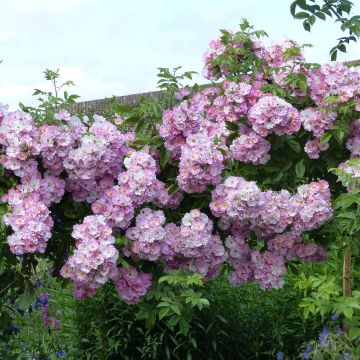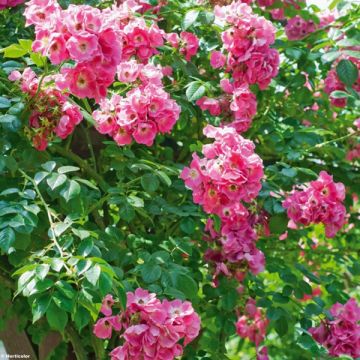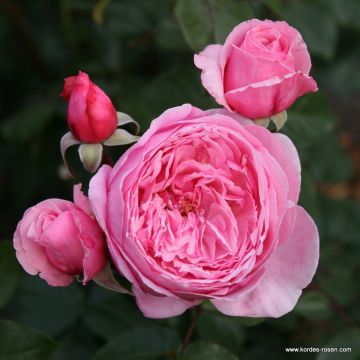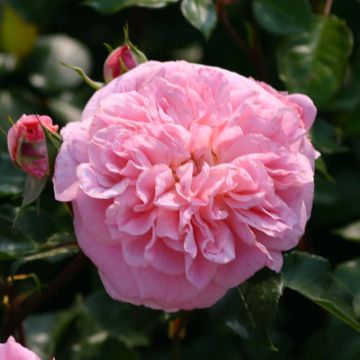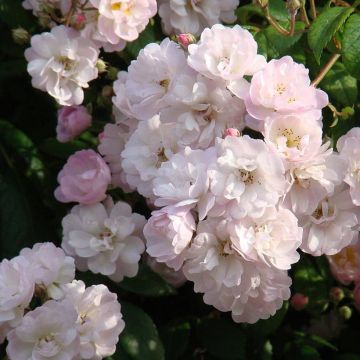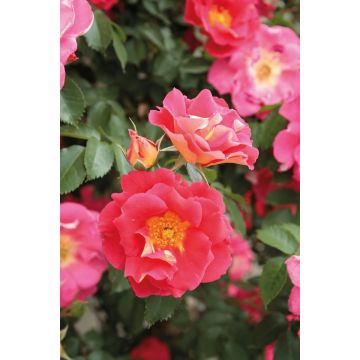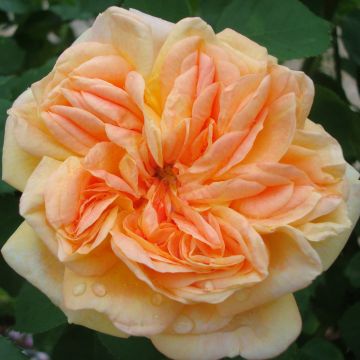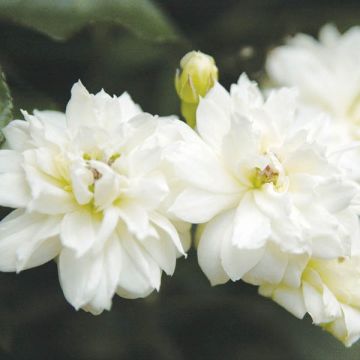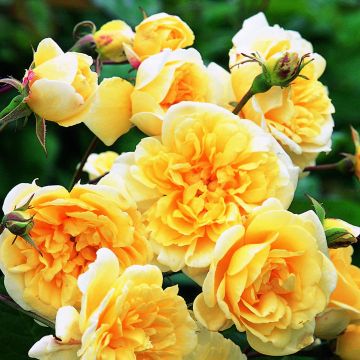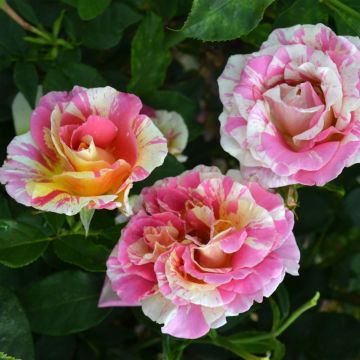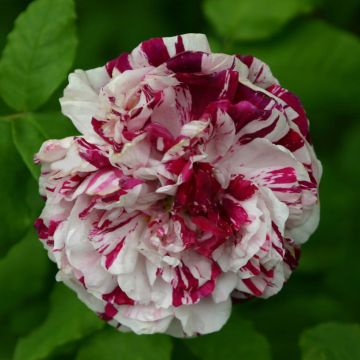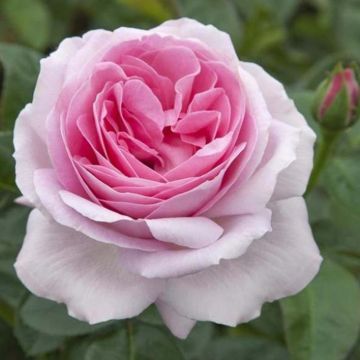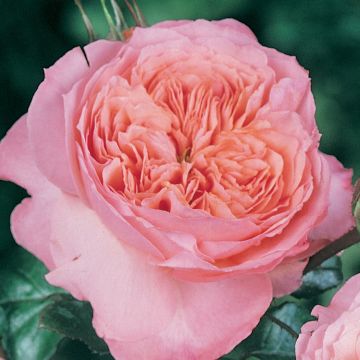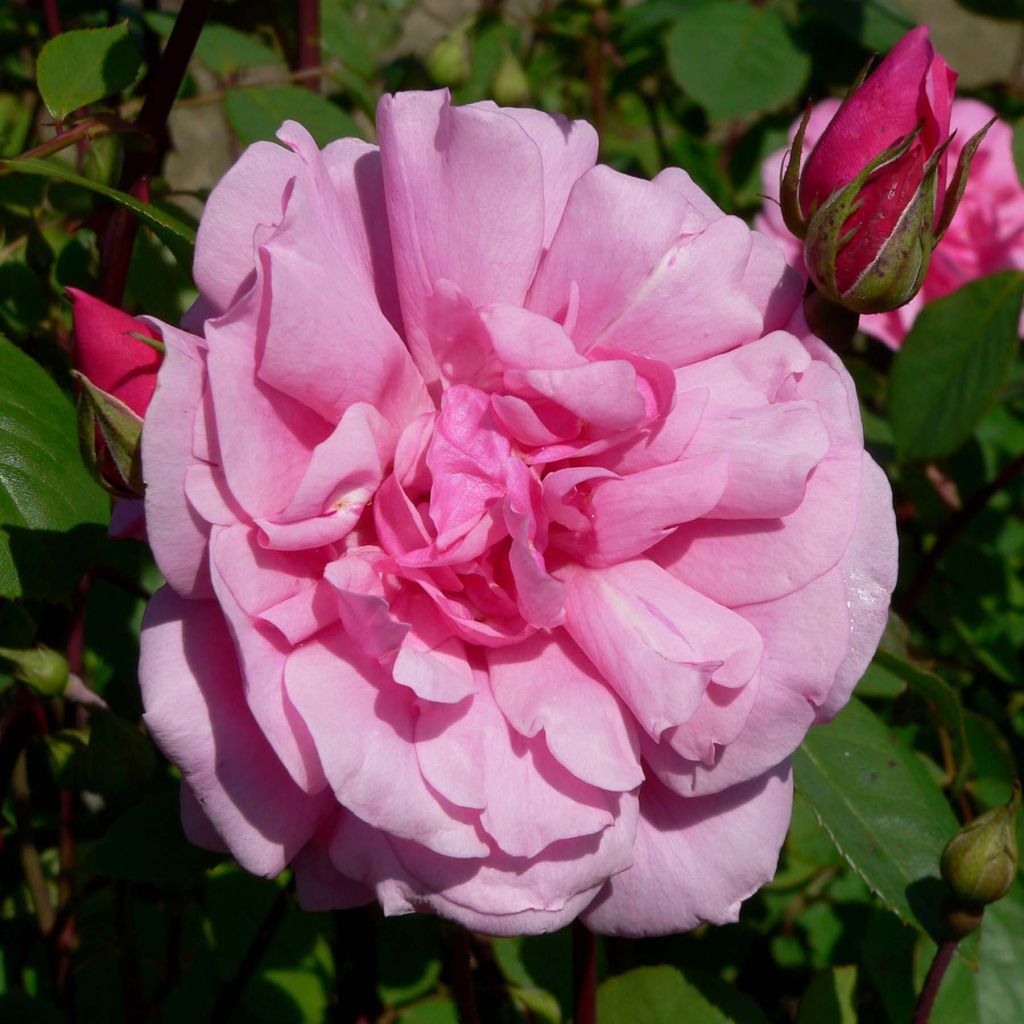

Rosa x polyantha 'Cecile Brunner'
Rosa x polyantha 'Cecile Brunner'
Rosa x polyantha Cecile brunner
Climbing Rose 'Cecile Brunner'
Received in perfect condition, the roots packed in a small soil protection, thank you." Analysis: - "Received" is the past tense of "receive" and is correct in this context. - "Perfect condition" is a more accurate translation of "pleine forme", as it refers to the good state of the roots. - "Packed" is used to describe the action of placing the roots in the soil protection. - "Soil protection" is a better translation for "protection de terreau" as it specifies the material used. - "Thank you" is a polite way to express gratitude and is appropriate in this context.
Pascale, 07/03/2022
Why not try an alternative variety in stock?
View all →This plant carries a 24 months recovery warranty
More information
We guarantee the quality of our plants for a full growing cycle, and will replace at our expense any plant that fails to recover under normal climatic and planting conditions.
From €5.90 for pickup delivery and €6.90 for home delivery
Express home delivery from €8.90.
From €5.90 for pickup delivery and €6.90 for home delivery
Express home delivery from €8.90.
Delivery to Corse prohibited: UE law prohibits the import of this plant from mainland France to Corse as part of the fight against Xylella fastidiosa. Please accept our sincere apologies.
More information

Does this plant fit my garden?
Set up your Plantfit profile →
Description
The Climbing Rose 'Cecile Brunner' is a vigorous mutation of the bush rose Bloomfield Abundance, a lovely variety created by the widow Ducher in 1880. But this old rose unfurls very strong branches, reaching 4 to 6 meters (13 to 20 feet), attacking old trees and uncertain fences. Its tiny, delicate double flowers are a pale, pearly pink, barely fleshy, scattered along its flexible branches. They sometimes nestle in its dense, disease-free foliage. It blooms abundantly in early summer, then more timidly in autumn. It prefers sunny situations or partial shade in hot climates.
This large rose, also known as Rosa x climbing 'Mignon' or Rosa x climbing 'Sweetheart Rose', is a vine obtained by Ducher in 1881. This excellent hybrid of Rosa chinensis, belonging to the family of Rosa (x) Polyantha, has a broad, imposing and flexible habit. It will reach a height of 4 to 6m (13 to 20ft) with a spread of 3 to 4 m (10 to 13ft), depending on the growing conditions. Its long stems are flexible and covered with dark green foliage, sparsely but perfectly healthy. The flowers of this climber, with a weakly perpetual flowering, form in June-July and then in September. They are borne on short shoots of the second year as soft pink buds. They open into double small cups, 2 to 3 cm (1in) in diameter, gathered in long clusters. Under the sun's effect, they fade to a whiter shade. Their fragrance is very light. The small fruits that delight birds in the winter are fleshy false fruits called hips.
'Cecile Brunner' is a rose with a feminine charm, delicate and wildly generous. Like other climbers, it is incomparable for filling large spaces and giving a slightly abandoned air, planted above overly strict flowerbeds. It is an ideal companion for dead trees that will revive uncertain fences and ugly buildings or sheds, which it gives a crazy charm. Trained on an arch near the terrace, it will create a poetic and fragrant passage. Since its flowering only lasts a month, it can be paired with a clematis with large flowers whose summer flowering will take over until autumn.
Report an error about the product description
Rosa x polyantha 'Cecile Brunner' in pictures
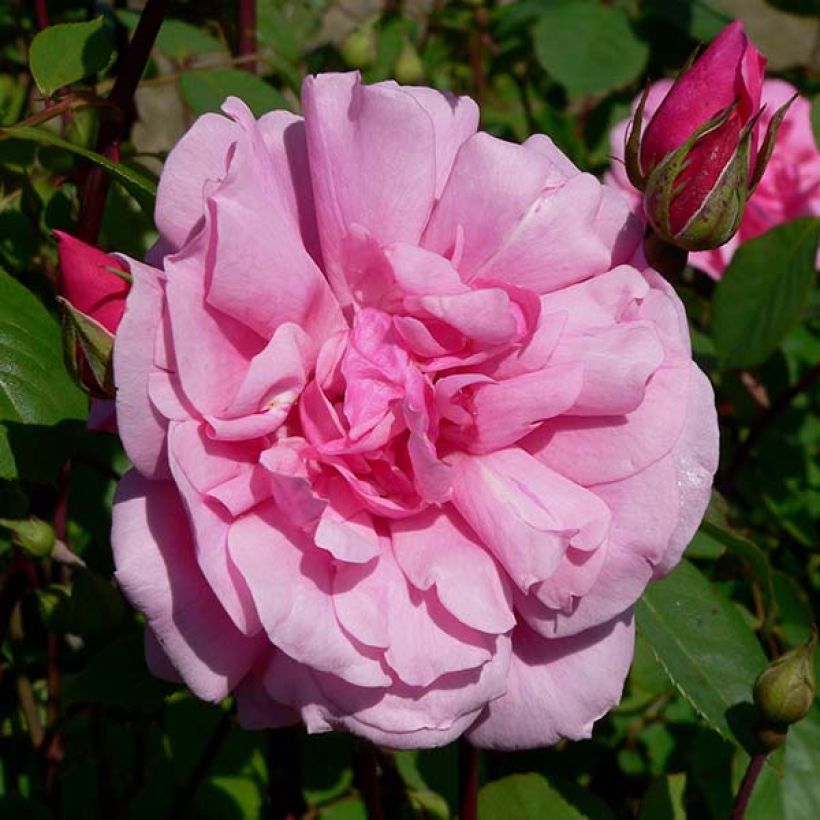

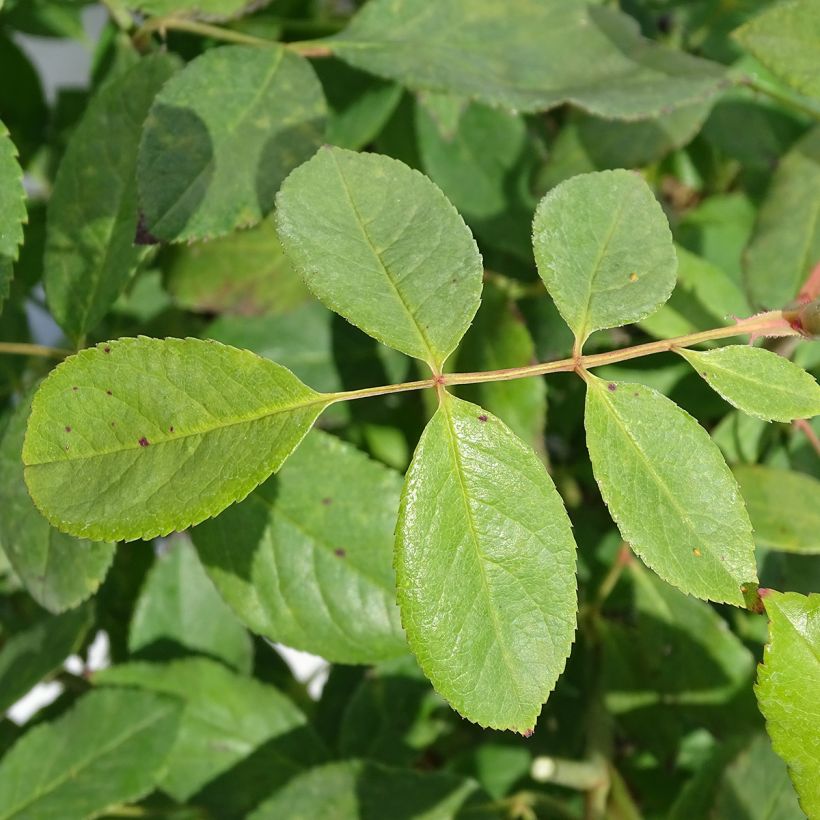

Plant habit
Flowering
Foliage
Botanical data
Rosa
x polyantha
Cecile brunner
Rosaceae
Climbing Rose 'Cecile Brunner'
Cultivar or hybrid
Rosa canina Laxa (4L/5L pot)
Other Rambling Roses
Planting and care
The Cecile Brunner rose is adaptable to any type of soil, as long as it is planted properly and provided with enough water and nutrients to establish itself. It should be planted in well-drained soil that has been worked well, and placed in a sunny or partially shaded location, avoiding south-facing walls. It is best to plant it in autumn and not during freezing temperatures.
The most floriferous branches of the rose are usually two years old. It is recommended to reduce the stems that bloomed the previous year to 3 or 4 buds, or pruned to 15 cm (6in). The new sturdy stems should be trained, and the old ones eliminated if necessary. This rose is quite hardy and can withstand temperatures as low as -25°C (-13°F). During winter, it may be necessary to remove dead wood and faded flowers, if fruit formation is not desired. In spring, after the risk of frost has passed, a light pruning can be done. Climbing roses can also be allowed to grow freely if there is ample space.
If you plant a climbing or rambling rose next to a living tree, the root system of the rose will compete with that of the already well-established tree. To control watering, here's a tip: plant the rose in a large container with a hole at the bottom, at the base of the tree. The tree roots will not penetrate the container for at least a year. Remove the container after 1 year, for example by cutting one side, without disturbing the rose's root system. By then, the rose will have had enough time to develop its root system deeply and will be more resistant.
Towards the end of summer, roses often develop spots or become unsightly, but this does not affect their development. These spots are a natural phenomenon and are not harmful to the rose.
Planting period
Intended location
Care
-
, onOrder confirmed
Reply from on Promesse de fleurs
Fragrant Roses
Haven't found what you were looking for?
Hardiness is the lowest winter temperature a plant can endure without suffering serious damage or even dying. However, hardiness is affected by location (a sheltered area, such as a patio), protection (winter cover) and soil type (hardiness is improved by well-drained soil).

Photo Sharing Terms & Conditions
In order to encourage gardeners to interact and share their experiences, Promesse de fleurs offers various media enabling content to be uploaded onto its Site - in particular via the ‘Photo sharing’ module.
The User agrees to refrain from:
- Posting any content that is illegal, prejudicial, insulting, racist, inciteful to hatred, revisionist, contrary to public decency, that infringes on privacy or on the privacy rights of third parties, in particular the publicity rights of persons and goods, intellectual property rights, or the right to privacy.
- Submitting content on behalf of a third party;
- Impersonate the identity of a third party and/or publish any personal information about a third party;
In general, the User undertakes to refrain from any unethical behaviour.
All Content (in particular text, comments, files, images, photos, videos, creative works, etc.), which may be subject to property or intellectual property rights, image or other private rights, shall remain the property of the User, subject to the limited rights granted by the terms of the licence granted by Promesse de fleurs as stated below. Users are at liberty to publish or not to publish such Content on the Site, notably via the ‘Photo Sharing’ facility, and accept that this Content shall be made public and freely accessible, notably on the Internet.
Users further acknowledge, undertake to have ,and guarantee that they hold all necessary rights and permissions to publish such material on the Site, in particular with regard to the legislation in force pertaining to any privacy, property, intellectual property, image, or contractual rights, or rights of any other nature. By publishing such Content on the Site, Users acknowledge accepting full liability as publishers of the Content within the meaning of the law, and grant Promesse de fleurs, free of charge, an inclusive, worldwide licence for the said Content for the entire duration of its publication, including all reproduction, representation, up/downloading, displaying, performing, transmission, and storage rights.
Users also grant permission for their name to be linked to the Content and accept that this link may not always be made available.
By engaging in posting material, Users consent to their Content becoming automatically accessible on the Internet, in particular on other sites and/or blogs and/or web pages of the Promesse de fleurs site, including in particular social pages and the Promesse de fleurs catalogue.
Users may secure the removal of entrusted content free of charge by issuing a simple request via our contact form.
The flowering period indicated on our website applies to countries and regions located in USDA zone 8 (France, the United Kingdom, Ireland, the Netherlands, etc.)
It will vary according to where you live:
- In zones 9 to 10 (Italy, Spain, Greece, etc.), flowering will occur about 2 to 4 weeks earlier.
- In zones 6 to 7 (Germany, Poland, Slovenia, and lower mountainous regions), flowering will be delayed by 2 to 3 weeks.
- In zone 5 (Central Europe, Scandinavia), blooming will be delayed by 3 to 5 weeks.
In temperate climates, pruning of spring-flowering shrubs (forsythia, spireas, etc.) should be done just after flowering.
Pruning of summer-flowering shrubs (Indian Lilac, Perovskia, etc.) can be done in winter or spring.
In cold regions as well as with frost-sensitive plants, avoid pruning too early when severe frosts may still occur.
The planting period indicated on our website applies to countries and regions located in USDA zone 8 (France, United Kingdom, Ireland, Netherlands).
It will vary according to where you live:
- In Mediterranean zones (Marseille, Madrid, Milan, etc.), autumn and winter are the best planting periods.
- In continental zones (Strasbourg, Munich, Vienna, etc.), delay planting by 2 to 3 weeks in spring and bring it forward by 2 to 4 weeks in autumn.
- In mountainous regions (the Alps, Pyrenees, Carpathians, etc.), it is best to plant in late spring (May-June) or late summer (August-September).
The harvesting period indicated on our website applies to countries and regions in USDA zone 8 (France, England, Ireland, the Netherlands).
In colder areas (Scandinavia, Poland, Austria...) fruit and vegetable harvests are likely to be delayed by 3-4 weeks.
In warmer areas (Italy, Spain, Greece, etc.), harvesting will probably take place earlier, depending on weather conditions.
The sowing periods indicated on our website apply to countries and regions within USDA Zone 8 (France, UK, Ireland, Netherlands).
In colder areas (Scandinavia, Poland, Austria...), delay any outdoor sowing by 3-4 weeks, or sow under glass.
In warmer climes (Italy, Spain, Greece, etc.), bring outdoor sowing forward by a few weeks.


































